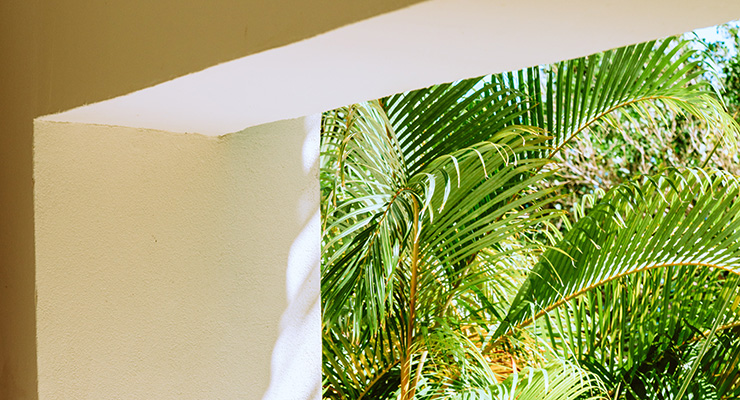Estimated reading time: 5 minutes
The trend toward wild and abundant native plantings and nature-based architectural features goes beyond aesthetics—it feeds the soul
—
In February last year, US investment company, Kennedy Wilson, bought a commercial building in Edinburgh, Scotland, outbidding myriad investors because of the building’s current and potential green credentials. The sale is a sign of the ‘greenification’ of commercial real estate. The trend goes beyond buying, designing, and renovating green-certified buildings. It extends to aesthetics, with customer-based commercial businesses keen to tap into the new importance that people are giving to nature. Below are just a few ways in which commercial premises can create greener, more calming surroundings for clients on the go; they apply equally to residential homes as well.
Embracing Native Plants
When designing gardens and small green areas for commercial premises, design doesn’t have to be excessively costly or fancy. A small budget can be maximized by combining simple hardscaping features like paths and walkways with native plants and grasses. A carefully manicured (and high maintenance) aesthetic is thankfully a thing of a bygone era. The biophilic design trend has revealed that the zeitgeist is all about wild, lovely, native plants and shrubs of all heights; those that can also serve as a home to small wildlife and restore the original look of neighborhoods and urban green areas. Local grasses, flowers, and shrubs can all work together to create an oasis that truly invites calm and relaxation.
Going Wild at Home
Homes with yards can emulate this trend in a similar way, choosing native over imported species for their home gardens. Many homeowners are doing so in an effort to save bees, since some 40 percent of invertebrate pollinator species are facing extinction and eight bee specie are officially endangered. When various homes grow wild gardens that are perfectly adapted to the ecosystem, bees and other helpful insects and wild animals can have a home, without overtaking yards. WandaVision star, Elizabeth Olson, is just one of many celebrities who have decided to embrace a wild-looking landscape that seems to have more in common with a multi-height permaculture yard than it does with a traditional cultivated garden. One of her passions, for instance, is lavender and hers are tall—about 24 inches in height, to be exact.
Harnessing the Benefits of Fragrance
Aromatic gardens appeal at a time in which stress is high, ‘nesting’ is popular and the senses crave a little pampering. Numerous studies have shown that aromatherapy—be it a bath that improves memory, a compound that wards off nausea, or an essential oil that energizes—can soothe and heal the human mind and spirit. Studies have shown that the essential oils extracted from specific plants like clary sage, chamomile, and lavender, can all help reduce the effects of stress. Commercial and residential premises with outdoor resting spaces or green roofs can therefore benefit by growing aromatic plants alongside grass, flowers, and shrubs. Herbs like rosemary and thyme are easy to grow and replace, and require minimal water usage, which makes them good choices when it comes to outdoor aromatherapy.
Fragrant Plants for the Home
When it comes to indoor home flora, a big trend involves growing fragrant indoor plants and trees like potted citrus trees, orange jasmine, hoya, lavender, gardenia, and even sweet laurel. Indoor citrus trees have the added visual appeal that fruits such as vivid oranges can bring. Homeowners can add to the magic by diffusing similarly hued essential oils (such as orange, mandarin, or bergamot essential oils) in the areas where these trees are growing. They can also opt for essential oil-infused candles containing identical or even complementary scents.
Transforming Structures into Living Walls
‘Bringing green into the gray’ can easily be achieved with exterior living walls, which can turn normal, cold buildings into vibrant, buzzing ones. This feature can already be seen in myriad buildings across the globe. For instance, The Avenue Centre building in Bournemouth, UK, now bears an exterior living wall that bursts to life with lush vines. In the lively corner between Aboukir St. and Petits Carreaux St. in Paris, a stunning living wall created by botanist, Patrick Blank, delights passers-by with its array of colors and diagonal patterns. Living walls don’t have to take up an entire facade. They can simply cover a small space divider or a statement wall in one part of a building’s exterior.
Green Walls in the Home
In this day and age of remote work, green walls are an ideal way to compartmentalize common spaces in doors—something that is necessary, for instance, if you are working from home and wish to design a flexible work space. There are many ways that you can create a chic and cheerful green wall at home. Start with wood pallets and place small potted succulents into each cap in the wood. You can also use these pallets to grow fragrant herbs such as basil and rosemary, which can make wonderful additions to your meals. If you like, you can fill an existing wall with plants like ferns, purple waffle plant, succulents of all hues, pothos, crotons, and hosta.
It is a good idea to enlist the help of a landscaper, since you can use various plants to create elaborate designs. Moreover, a landscaper will be able to provide helpful advice regarding how many plants you need, the maintenance required, and how long your wall will take to thrive to its fullest volume.
Green zones can add artistry and appeal to virtually any structure. From shops to office buildings and nature-filled homes, many designs are revealing the modern penchant for connecting human beings to the environment through landscaping.
You may also enjoy reading Sustainability & Purpose: Living in Concert with Our Ecology and Humanity, an interview with Leif Skogberg by Bill Miles.
